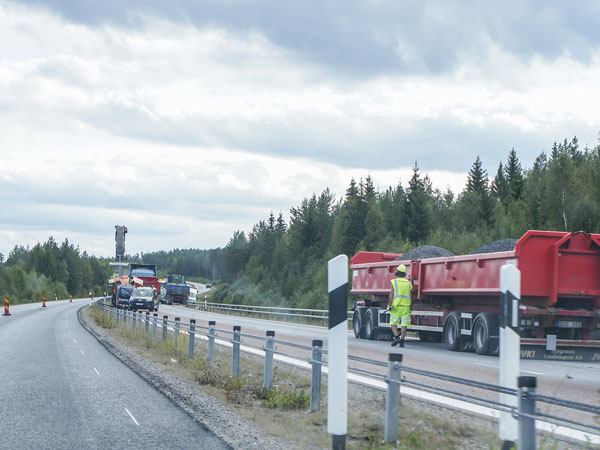Friction is an important property for road safety. VTI has investigated how roads change in the first few weeks after surfacing work has been completed. Researchers recommend posting warning signs when the road is opened and waiting at least three weeks to measure the friction of the road.
A few years ago, several notable accidents took place on state roads, which led to new guidelines for friction measurement and signposting of new surfaces. While the accidents did not take place on entirely newly surfaced roads, they did highlight the limited documented knowledge and experience of these situations. The VTI researchers therefore wanted to find what the friction conditions are on newly paved road stretches.

Ongoing surfacing work. Photo: Frugan / Mostphotos
The accidents mainly took place on roads with stone matrix asphalt [open-graded HMA (Hot Mix Asphalt)], dense-graded HMA and bituminous surface treatments which the researchers also chose to investigate in various places in Östergötland.
Changes in friction
The study shows major changes in friction immediately after vehicles began using the roads. Friction started out high, before dropping and finally stabilising or going back up to reach a stable level. The results were somewhat surprising. The researchers’ hypothesis was that the friction would be lower until a certain number of vehicles had passed, i.e. that the amount of traffic determines how long it takes for the new road stretch to reach acceptable friction.
“The road thus definitely does not need to be checked immediately after allowing traffic on to it. We consider that a waste of both time, money, and functionality” says project manager Anna Arvidsson. In the study, the researchers have not found any correlation between traffic volume and friction. They can only note that it takes most objects around three to four weeks to reach stable friction. Their recommendation is thus to measure friction no earlier than three weeks after opening, when the top layer of the surface has been worn away and friction has stabilised, unless obvious friction issues arise.
Even if friction can be high while the surface is new, this can be hard to tell with the naked eye. The recommendation is therefore the same as before, to post sign A10 “Warning, slippery road” with an additional “When wet” sign after surfacing a stretch of road, and for these signs to remain until the friction requirements have been proven to be met.
Read the report: Friction and texture developments on new paving (in Swedish with an English summary).
 Contact:
Contact:
Anna Arvidsson
anna.arvidsson@vti.se
VTI, Sweden






Follow us: